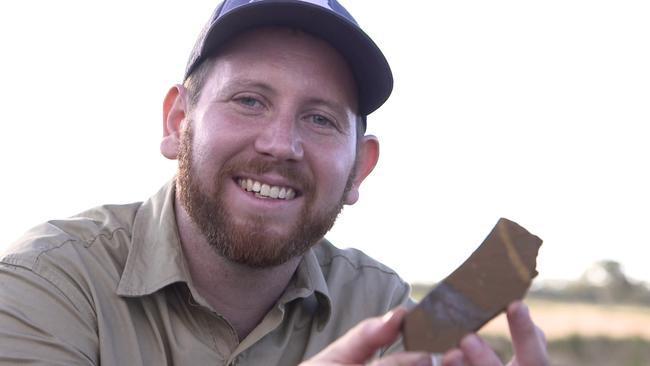What did this fish eat 15 million years ago? Easy, it’s still here in its stomach
Scientists have discovered a 15 million-year-old freshwater fish fossil, which showed what was in its stomach.

Scientists have discovered a 15 million-year-old freshwater fish fossil, which showed what was in its stomach.
The remarkable discovery could help researchers understand Australia’s ancient ecosystems and the evolution of the grayling and smelt fish species.
Ferruaspis brocksi, named after Australian National University researcher Jochen Brocks who played a key role in its discovery, is the first freshwater smelt to be found in Australia.
It was discovered at the McGraths Flat fossil site near Gulgong in NSW.
“This discovery opens new avenues for understanding the evolutionary history of Australia’s freshwater fish species and ancient ecosystems,” Professor Brocks said.
Lead author of the adjoining study published in the Journal of Vertebrate Palaeontology, Matthew McCurry, said scientists previously lacked concrete evidence to pinpoint when this group of fish arrived in Australia and how they evolved over time.
“The discovery of the 15 million-year-old freshwater fish fossil offers us an unprecedented opportunity to understand Australia’s ancient ecosystems and the evolution of its fish species,” said Dr McCurry, a palaeontologist from the Australian Museum and UNSW Sydney.
“This fossil is part of the Osmeriforms fish family – a diverse group of fish species within Australia that includes species like the Australian grayling and the Australian smelt. But without fossils it has been hard for us to tell exactly when the group arrived in Australia and whether they changed at all through time.”
“Well preserved” stomach contents also showed scientists how the ancient species behaved. “We now know that Ferruaspis brocksi fed on a range of invertebrates, but the most common prey was small phantom midge larvae. One of the fossils even shows a parasite attached to the tail of the fish. It’s a juvenile freshwater mussel called a glochidium. These juvenile mussels attach themselves to the gills or tails of fish to hitch rides up and down streams,” Dr McCurry said.
University of Canberra and CSIRO researcher Michael Frese said a powerful microscope showed “tiny colour-producing structures known as melanosomes”.
“Fossilised melanosomes have previously enabled palaeontologists to reconstruct the colour of feathers, but melanosomes have never been used to reconstruct the colour pattern of a long extinct fish species,” he said.




To join the conversation, please log in. Don't have an account? Register
Join the conversation, you are commenting as Logout